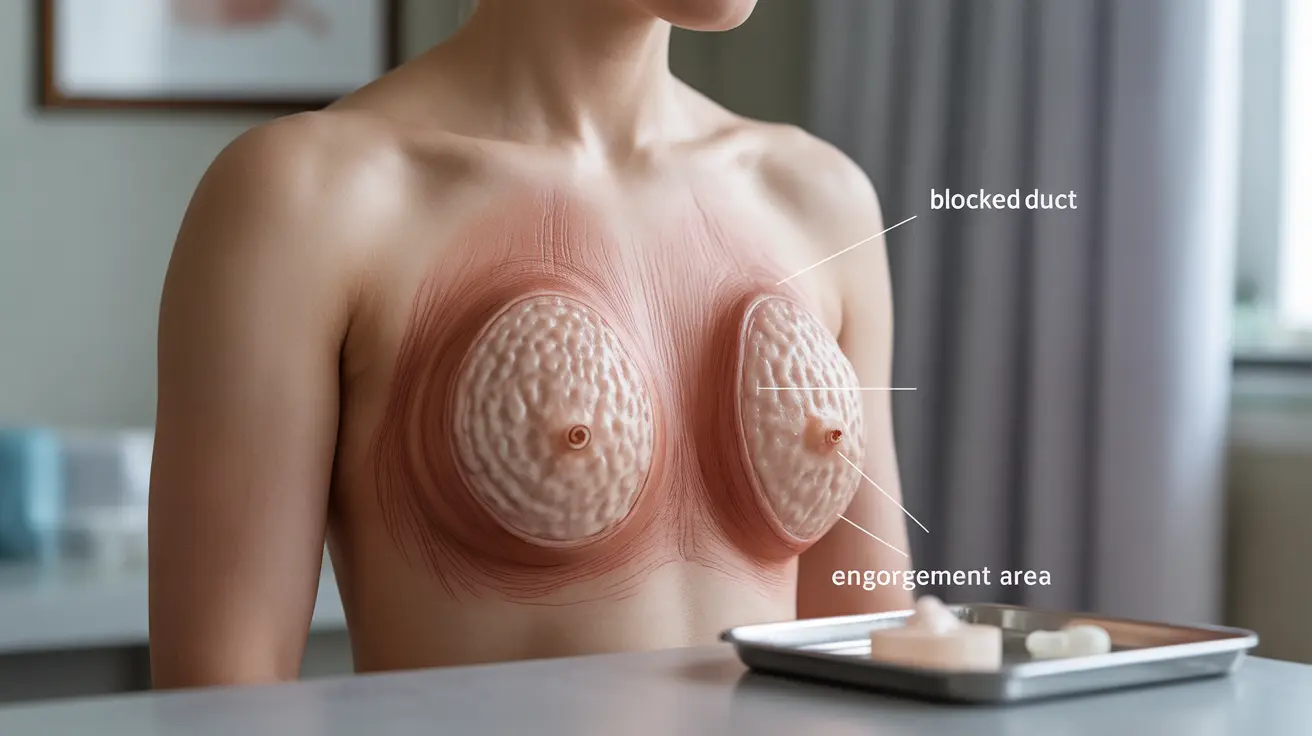Discovering a lump in your breast while breastfeeding can be concerning, but it's important to know that most breast lumps during lactation are benign and often related to common breastfeeding challenges. Understanding the different types of breast lumps, their causes, and appropriate treatments can help nursing mothers manage these conditions effectively while maintaining a healthy breastfeeding journey.
Common Causes of Breast Lumps During Breastfeeding
Breast lumps during breastfeeding typically develop from several common conditions that affect lactating mothers. Understanding these causes is crucial for proper treatment and peace of mind.
Blocked Milk Ducts
A blocked or clogged milk duct is one of the most common causes of breast lumps during breastfeeding. These typically appear as tender, localized lumps that feel firm to the touch. The surrounding area may appear reddened and feel warm, but unlike mastitis, you usually won't experience systemic symptoms like fever.
Mastitis
Mastitis occurs when breast tissue becomes infected, often developing from an untreated blocked duct. The affected area typically appears red and swollen, and you may experience flu-like symptoms including fever, chills, and body aches. This condition requires prompt attention and sometimes antibiotic treatment.
Breast Engorgement
Engorgement can cause the entire breast to feel lumpy and uncomfortable, particularly in the early days of breastfeeding or when feedings are missed. The breast tissue becomes swollen with milk and may feel hard and painful to touch.
Prevention and Management Strategies
Proper Breastfeeding Technique
Maintaining good breastfeeding practices is crucial for preventing breast lumps. This includes ensuring proper latch, regularly emptying the breasts, and avoiding prolonged periods between feedings. Position changes during nursing can help drain all areas of the breast effectively.
Self-Care Measures
Regular breast massage, warm compresses before feeding, and cold compresses after feeding can help prevent and manage lumps. Wearing well-fitted, non-restrictive nursing bras and staying hydrated also contribute to healthy breast tissue during lactation.
When to Seek Medical Attention
While most breastfeeding-related breast lumps are benign, certain symptoms warrant immediate medical attention. Contact your healthcare provider if you experience:
- Fever above 101°F (38.3°C)
- Severe breast pain
- Symptoms that don't improve with home treatment
- A lump that persists after trying self-care measures
- Any unusual changes in breast appearance or texture
Frequently Asked Questions
What are the typical symptoms of a blocked milk duct during breastfeeding, and how can I treat it at home? A blocked milk duct typically presents as a tender, localized lump that may feel warm to touch. Treat it by applying warm compresses, frequently nursing or pumping from the affected side, and gently massaging the lump while feeding.
How do I differentiate between a breast lump caused by mastitis and one caused by a blocked milk duct during breastfeeding? Mastitis typically involves more severe symptoms than a blocked duct, including fever, body aches, and flu-like symptoms. The breast will usually be more extensively red, swollen, and painful compared to a localized blocked duct.
What are the risk factors for developing mastitis while breastfeeding, and how can I prevent it? Risk factors include poor latch, missed feedings, cracked nipples, and previous mastitis episodes. Prevention involves regular breast emptying, proper positioning and latch, avoiding tight clothing, and maintaining good hygiene.
Can a breast lump during breastfeeding be a sign of something more serious, like breast cancer, and when should I seek medical attention? While rare during lactation, breast cancer is possible. Seek medical attention if a lump persists after trying self-care measures, doesn't move with breast tissue, or is accompanied by skin changes or nipple discharge.
What are some effective home remedies to relieve breast engorgement and reduce the risk of developing a lump during breastfeeding? Effective remedies include frequent nursing, cold cabbage leaves between feedings, gentle breast massage, warm showers before feeding, and ensuring proper breast drainage through position changes during nursing.




